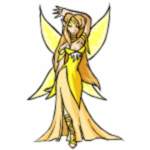Spenser’s The Faerie Queene is a poem seemingly based upon a fiction world, with a very real political background. Characters such as the Faerie Queene herself as representative of figures in history that are very recognizable – like Queen Elizabeth. King Arthur is also seen throughout the story, and the other characters are based upon the virtues we all known from biblical stories and everyday life. Una represents purity, truth, and wholesomeness, and the Redcrosse Knight, who is the main character, represents pride.
Analytically speaking, pride is the common theme throughout each of the knight’s trials. He is able to defeat Error, but is plagued by the error of his ways afterwards. It is the pride that blinds him from being able to see his weaknesses – he is weak to lust, jealousy, and most of all, he is weak to temptation. He is tempted by Archimago, and by Duessa. His visions of grandeur and success get in the way of the reality, and it is only through his visits to he House of Pride and the House of Holiness that he is able to become the humble hero he needed to become.
The turning point in the poem is during his time at the House of Holiness – when he is with despair, he nearly gives up on his quest, and on himself. It is Una who has to coax him out of his misery, which is important to note because it is Una who must save him many times throughout the story. Because Redcrosse had to face his inner self, he is able to transform, which is partly what grants him success in the end. The other saving grace is the gift of God’s power. His gifts during the dragon fight are representative of Christian ideas. Spenser is trying to get readers to realize the incredible difference between Protestantism and Catholicism – and you can guess which one prevails. Historically, Edmund Spenser was extremely active in politics, and the allegory behind The Faerie Queene is what gives it the depth it is famous for.
It is also important to note that this poem, along with other Spenser works, is what helped form the modern English verse. Spenser is one of the famous authors among the literary world, along with William Shakespeare, who created the verse we have come to adore today.
There are many important verses throughout the poem, and the scenes in which Una appears are almost always significant. Many anthologies, such as Norton’s Anthology of English Literature cut out some of the rich pieces in which Una takes part, but her quotes are meaningful and full of important text. For anyone looking to write about The Faerie Queene, consider starting with her scenes, particularly her interaction with the Redcrosse Knight. In Book 1, Canto 1, she cries out “Now now Sir knight, shew what ye bee, Add faith unto your force, and be not faint: Strangle her, else she sure will strangle thee.”
In this part of the story, readers begin to realize what a force Una really is, although she is a quiet character. From that point on, it is Una’s urging which get the knight from place to place. She is a great character to analyze more in depth.
Take careful note of the scenes in which the knight defeats Error, and the Dragon. Sometimes readers overlook the scene of the dragon because it seems like the road to his success is more important. However, there are many important themes embedded in the defeat of the dragon, and Spenser’s allegory is completed in this moment. Archimago and Duessa are important in terms of deception and are key when proving the idea the Redcrosse is blinded by his own shortcomings. Each and every one of the characters, large or small, play a part in the grand scheme that is The Faerie Queene.


